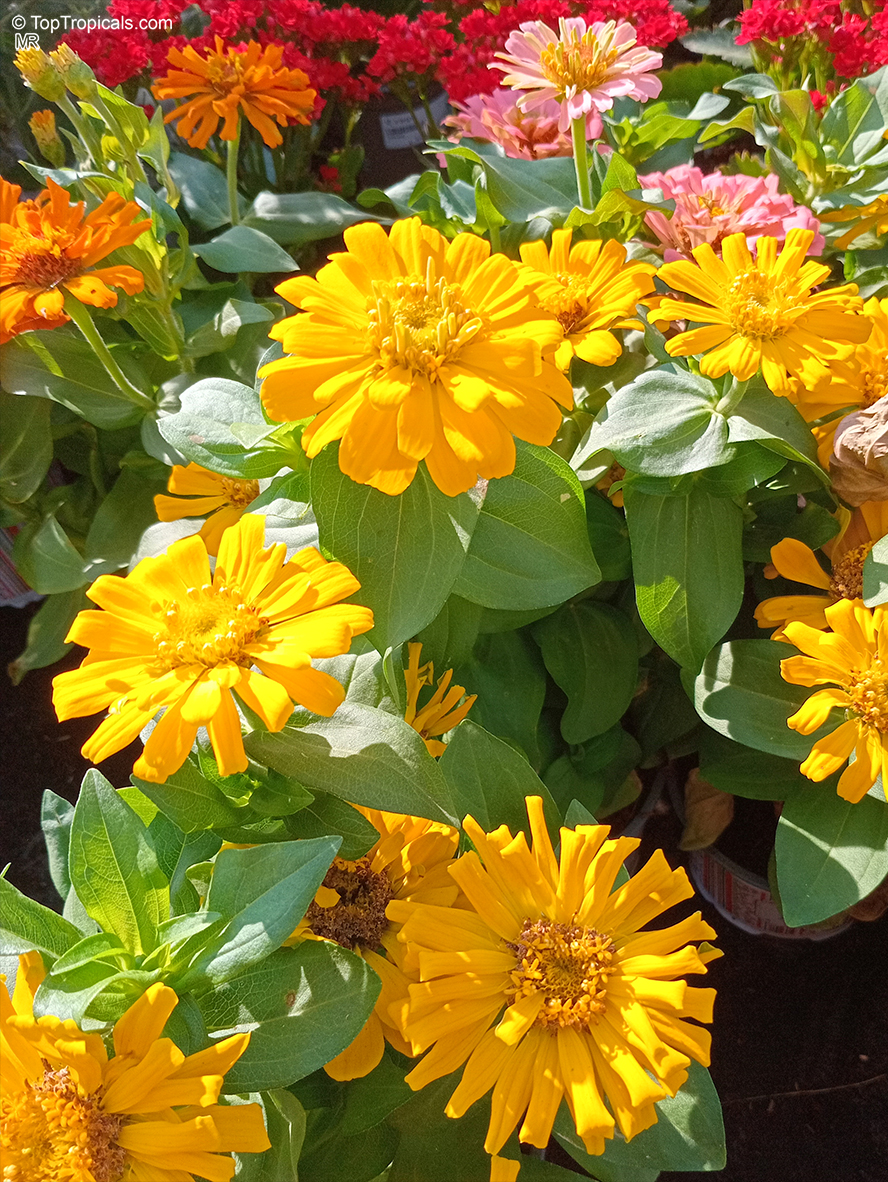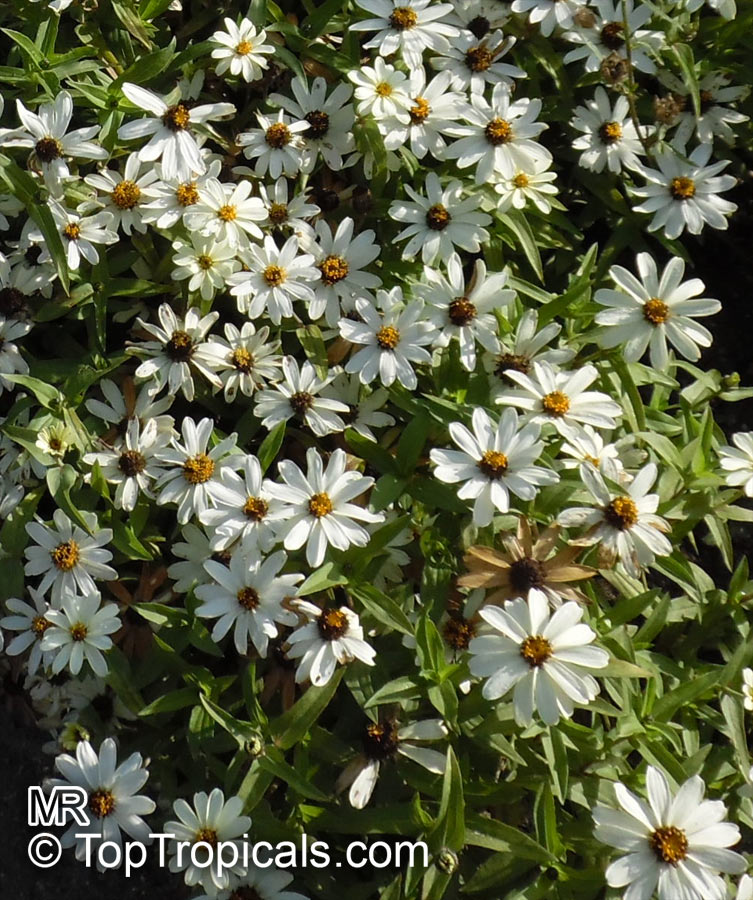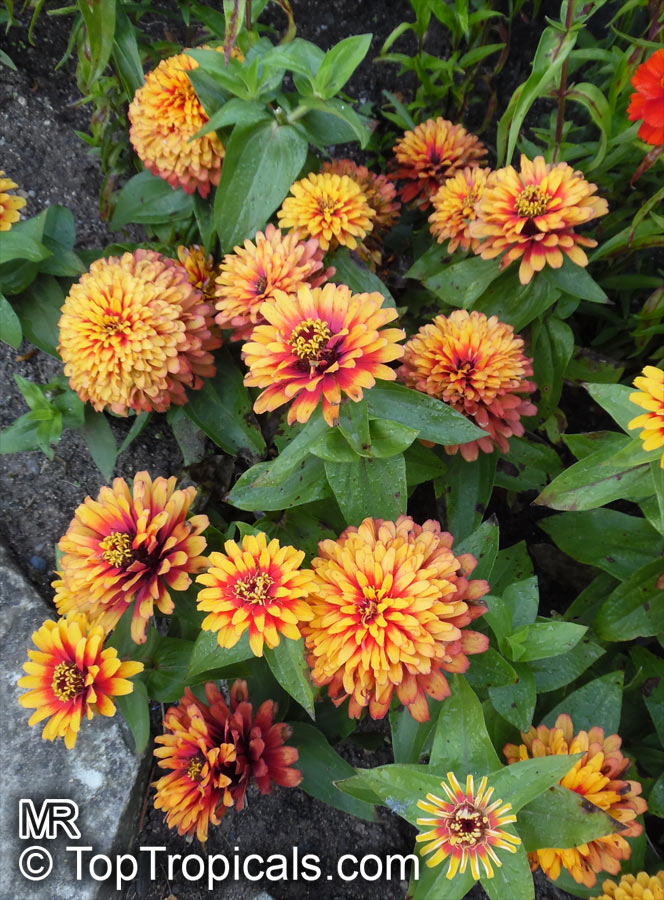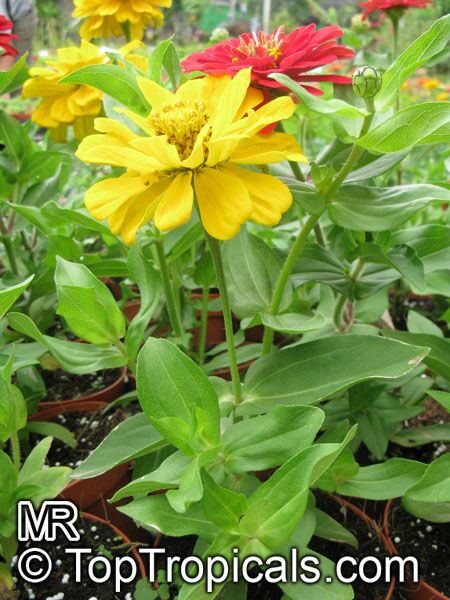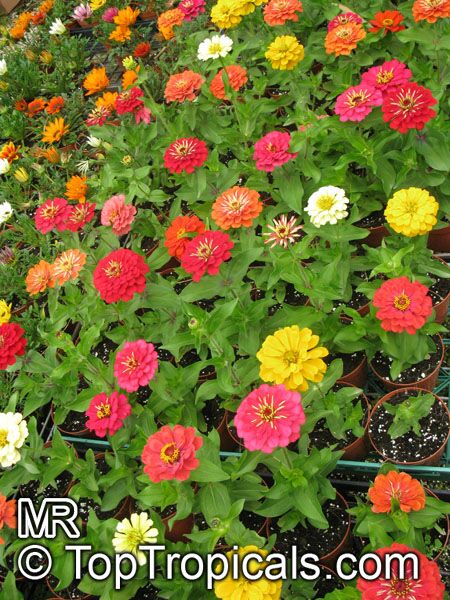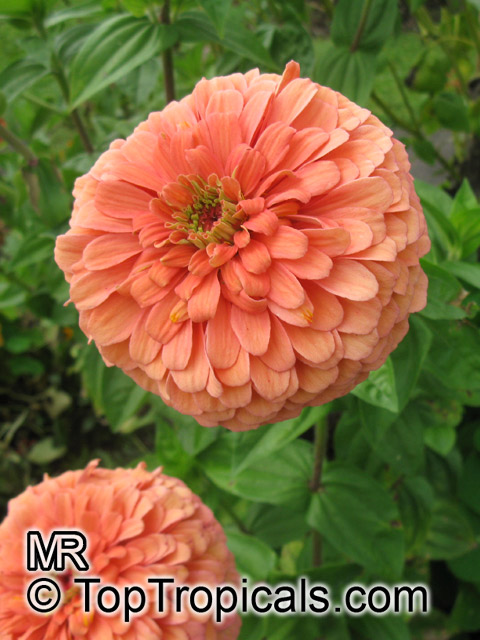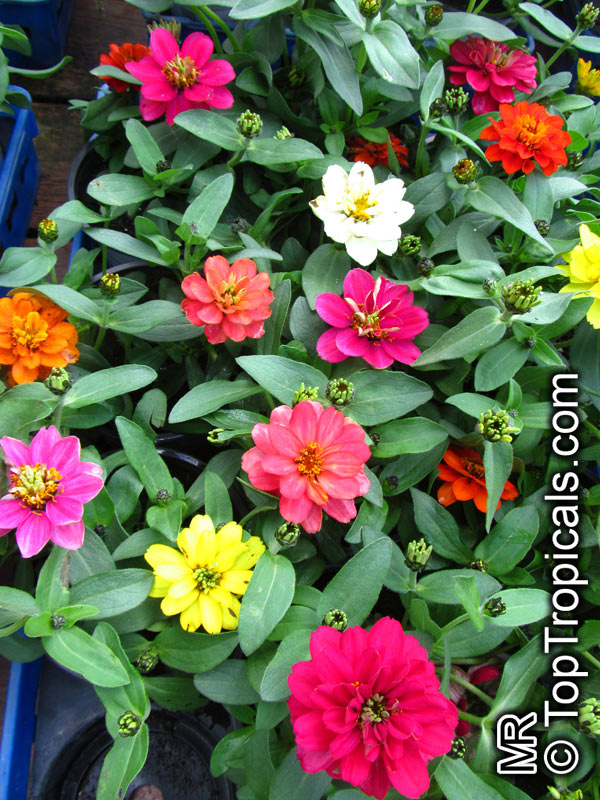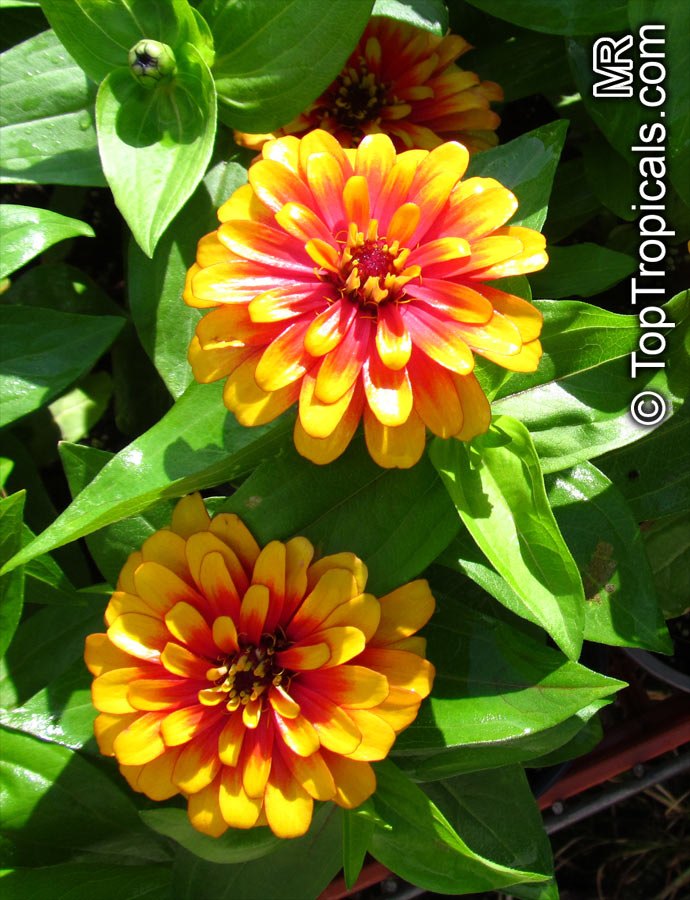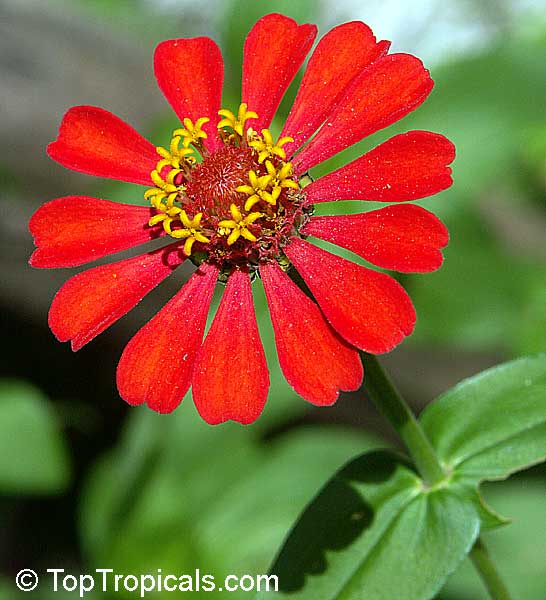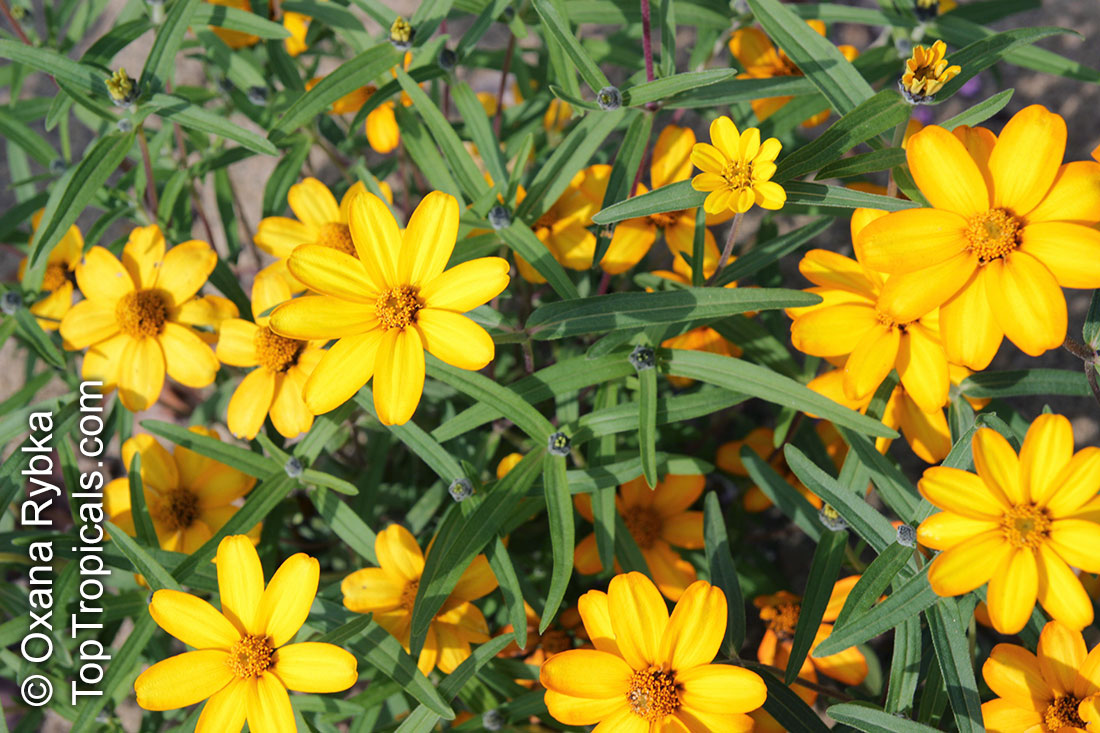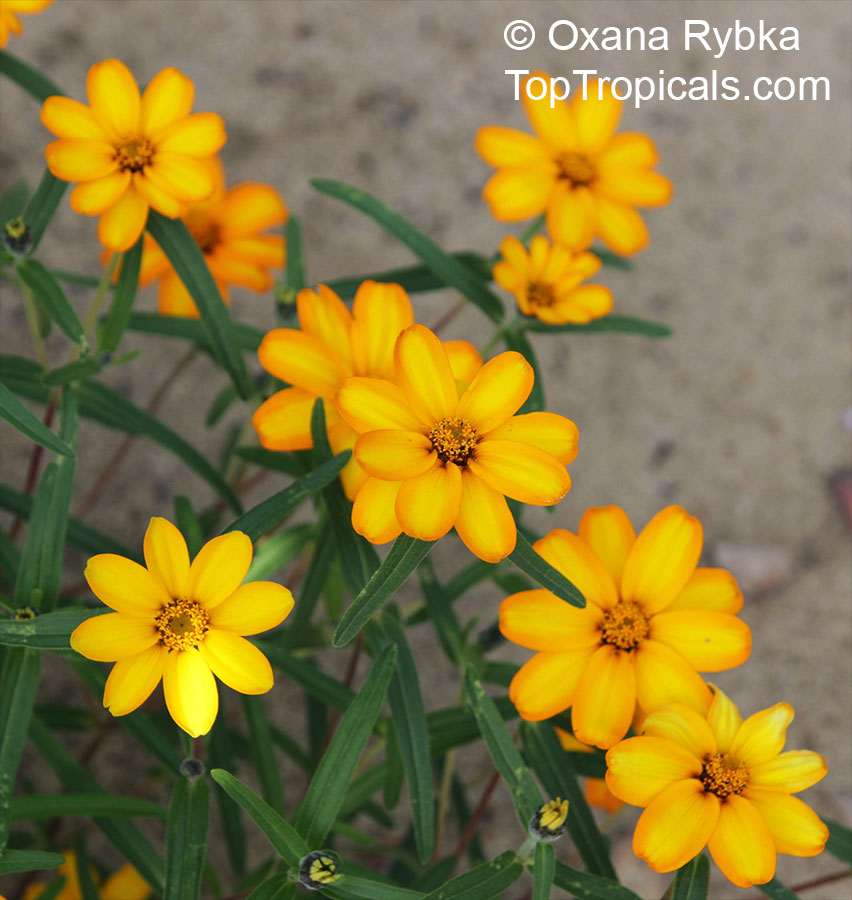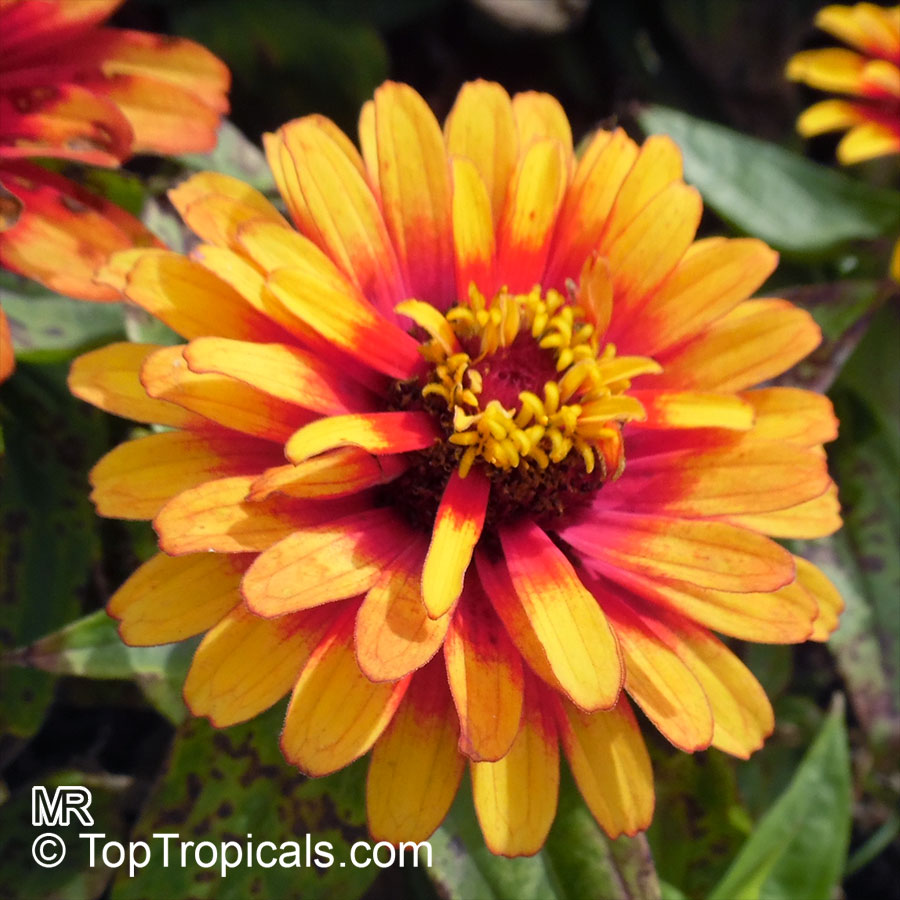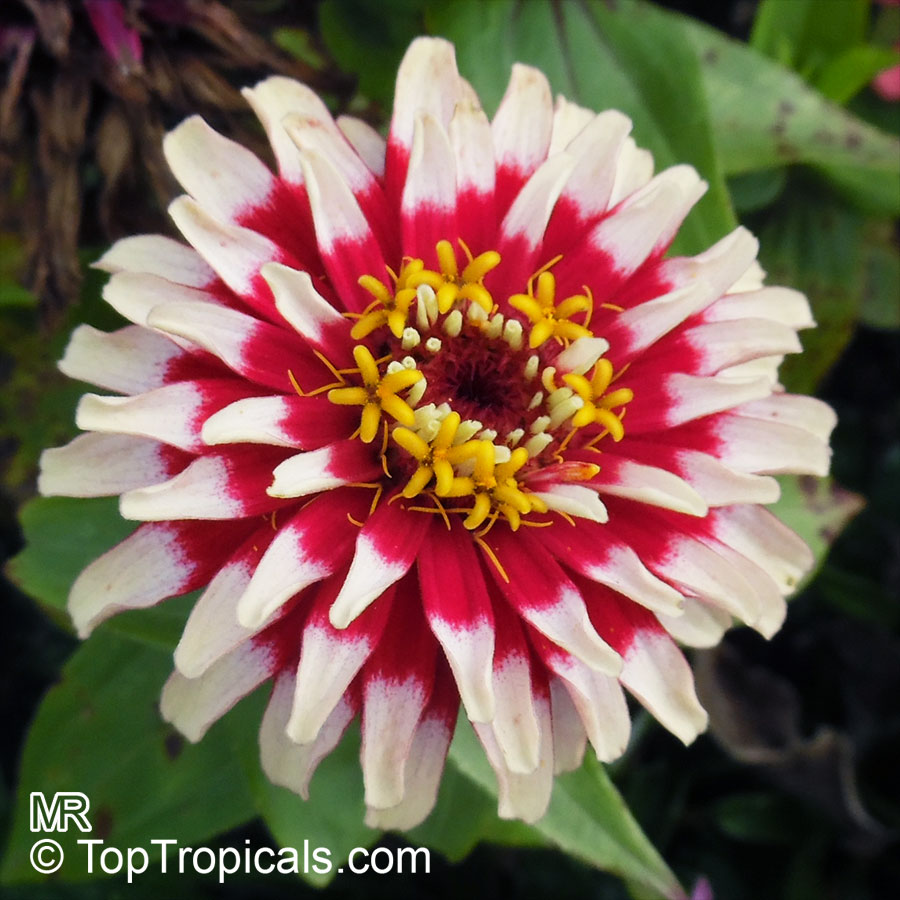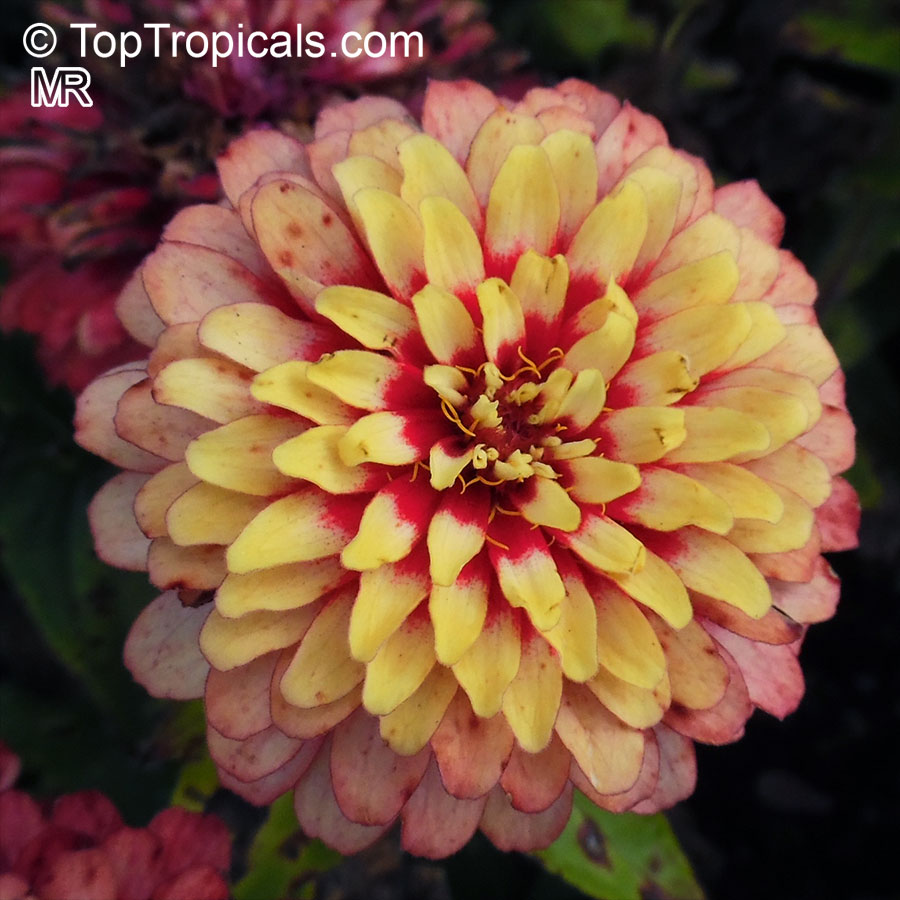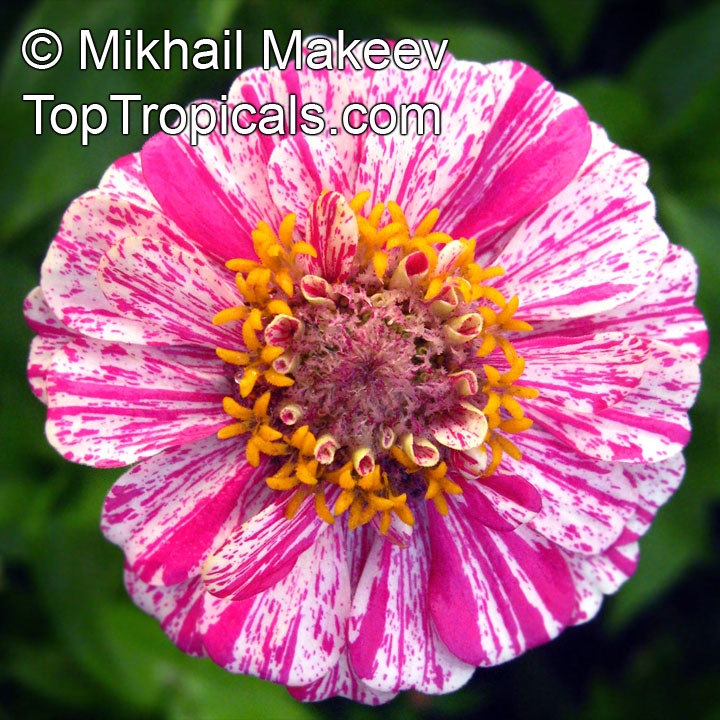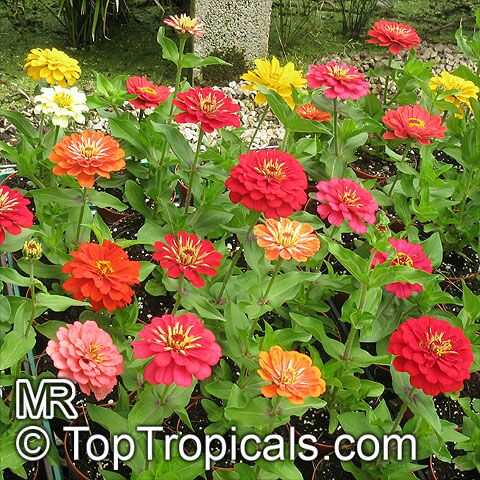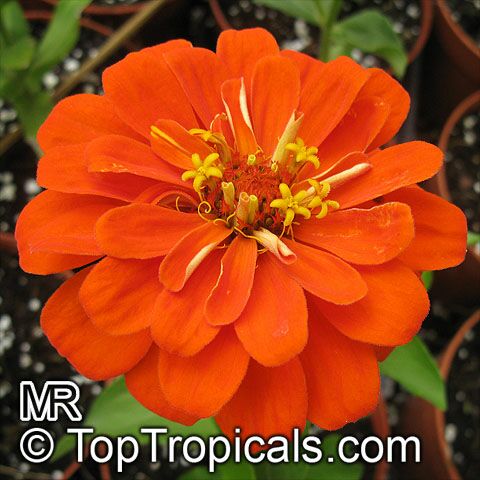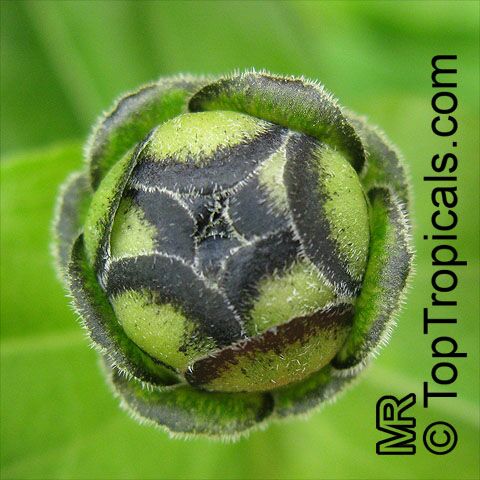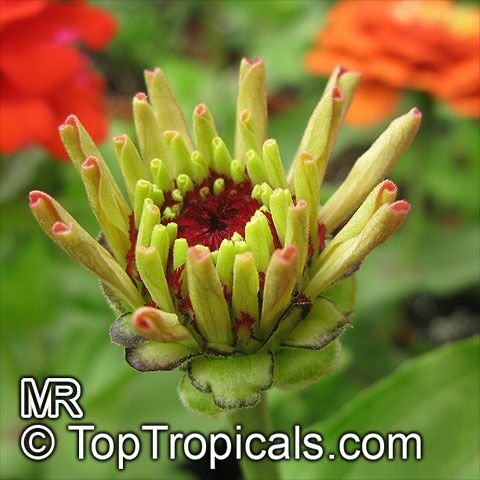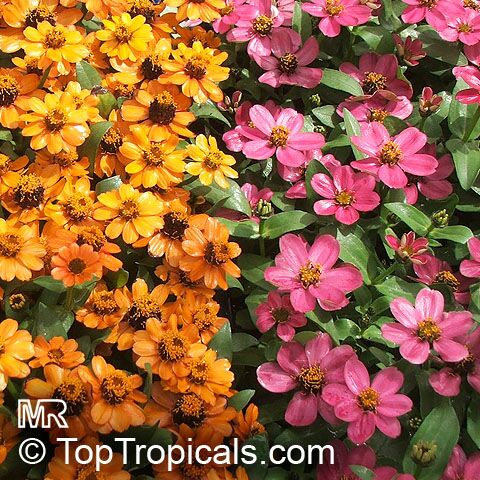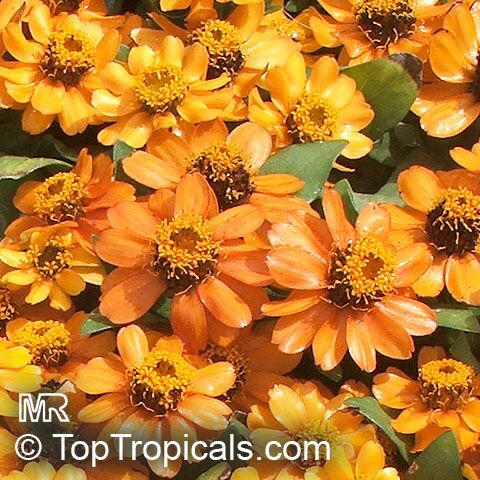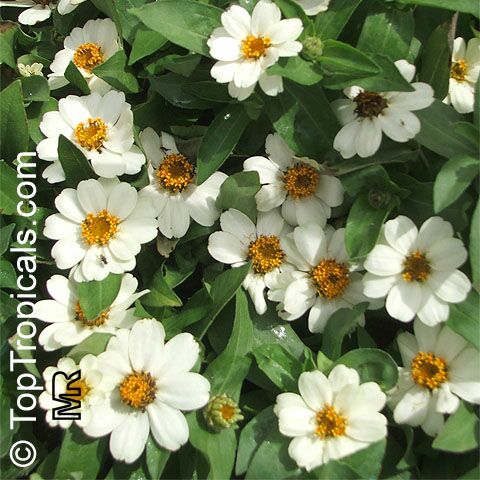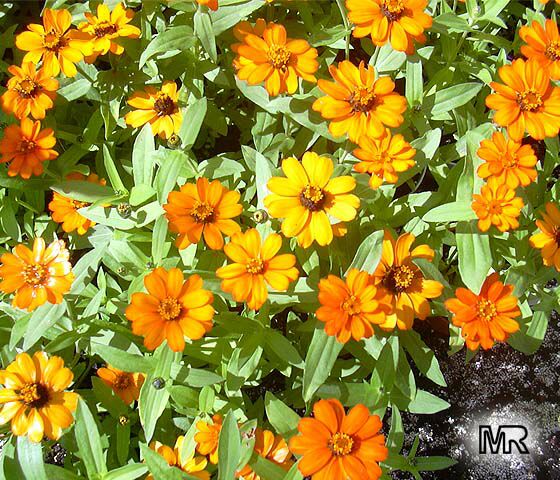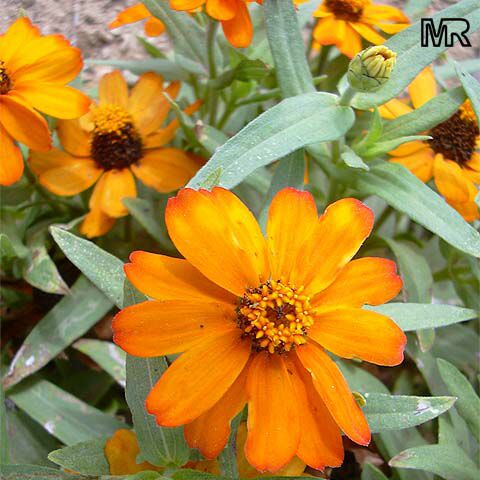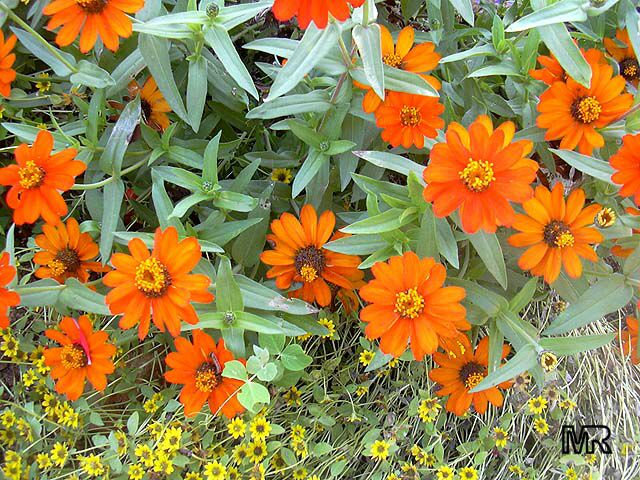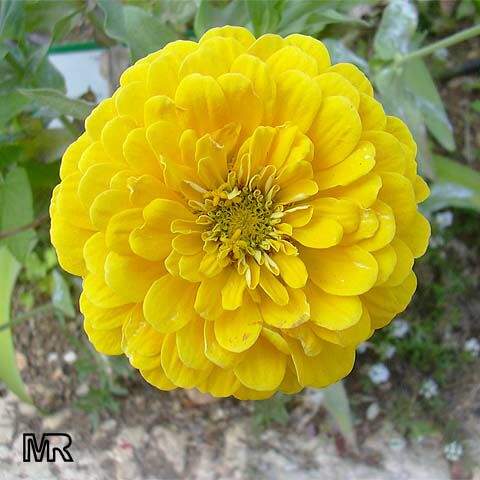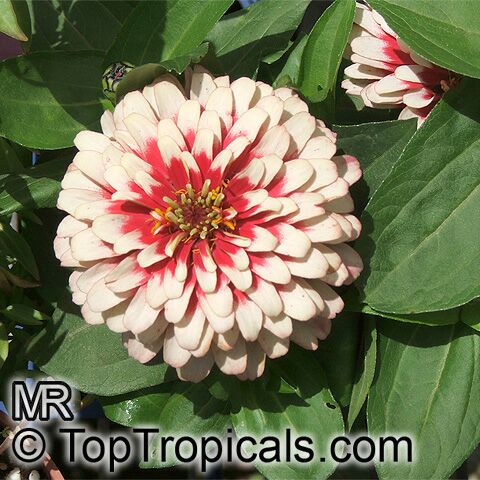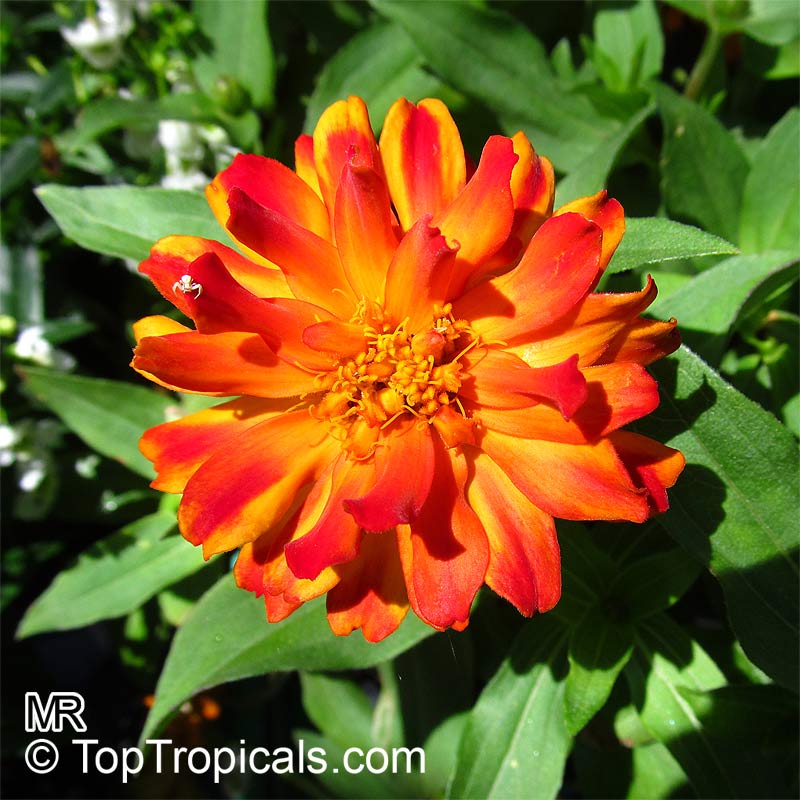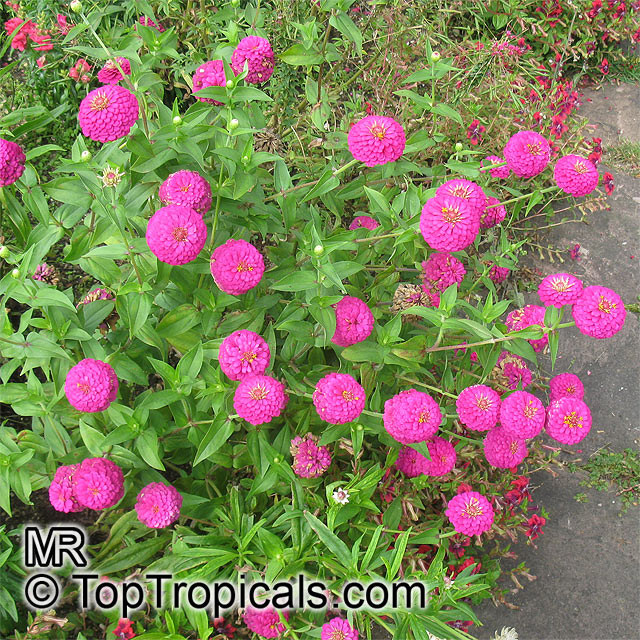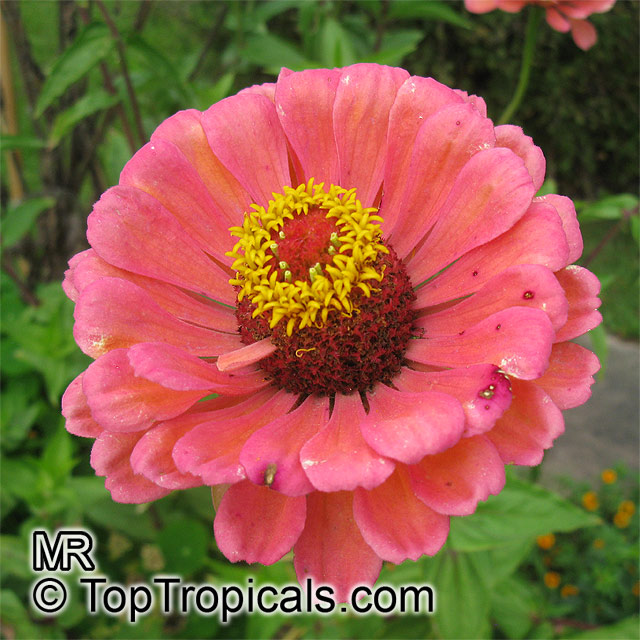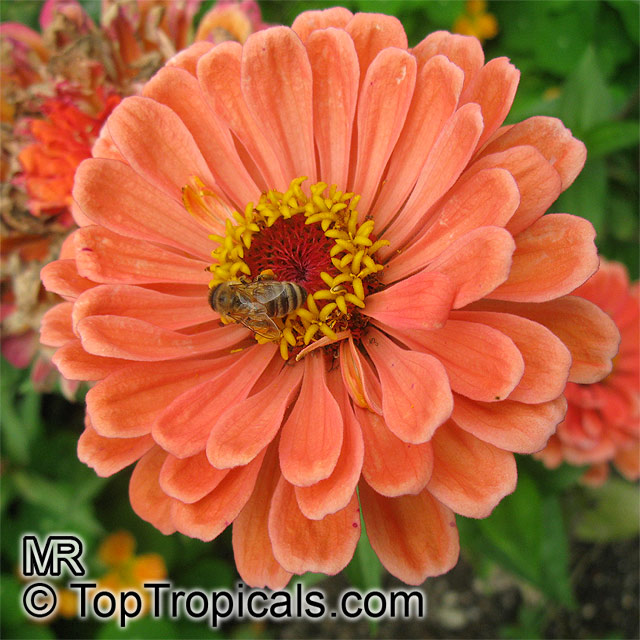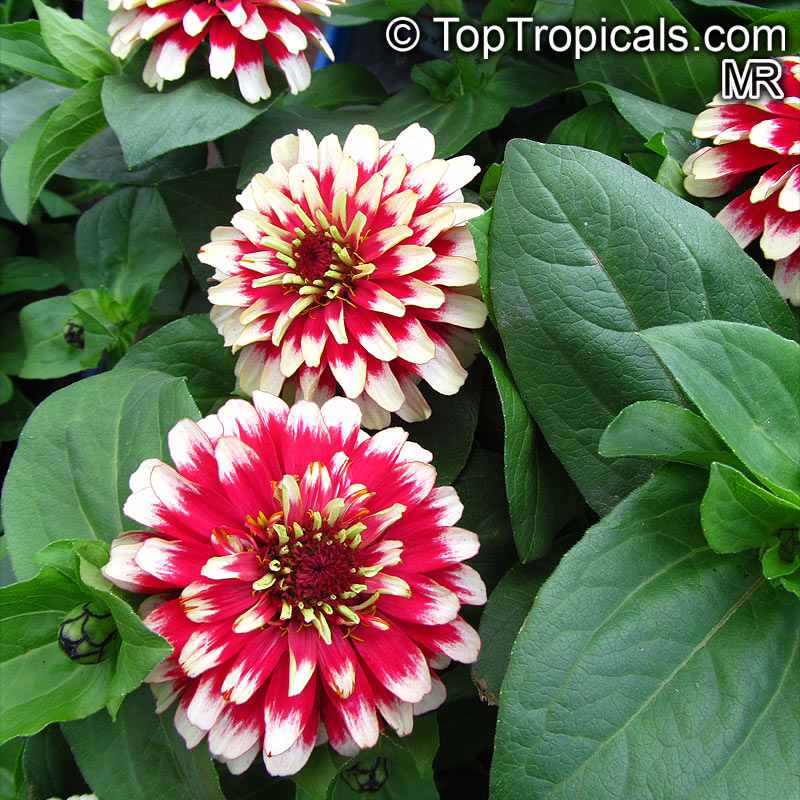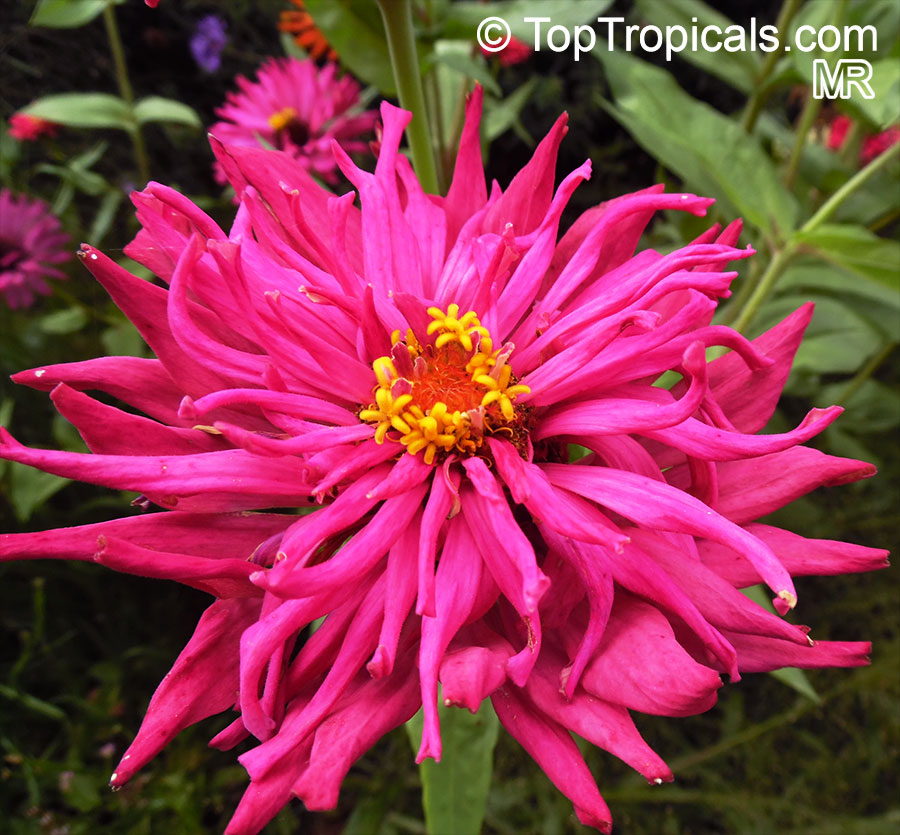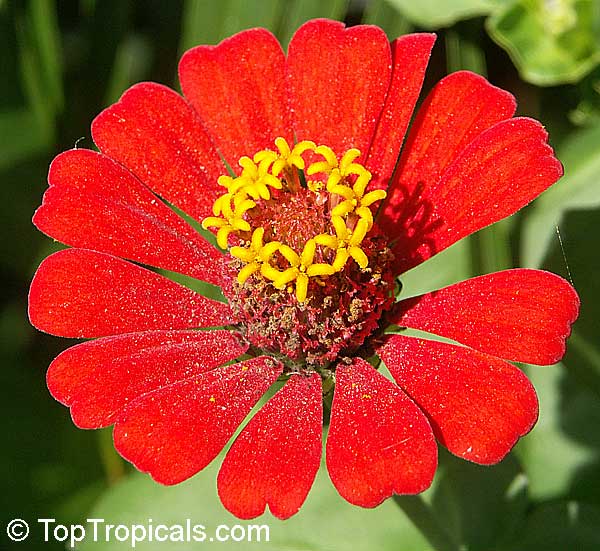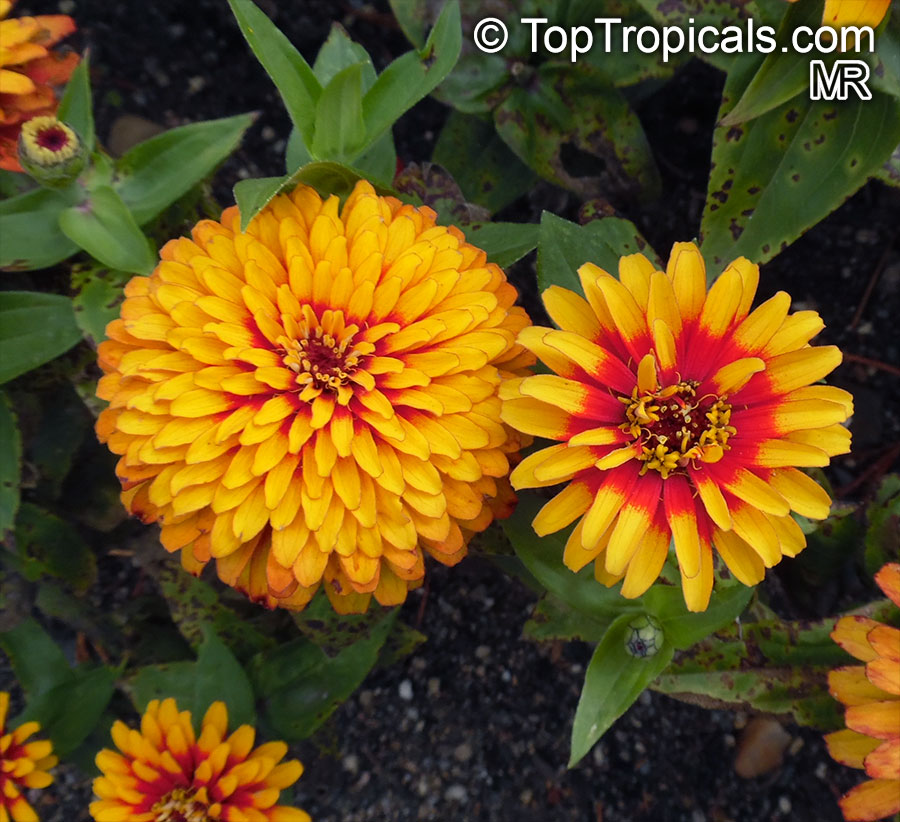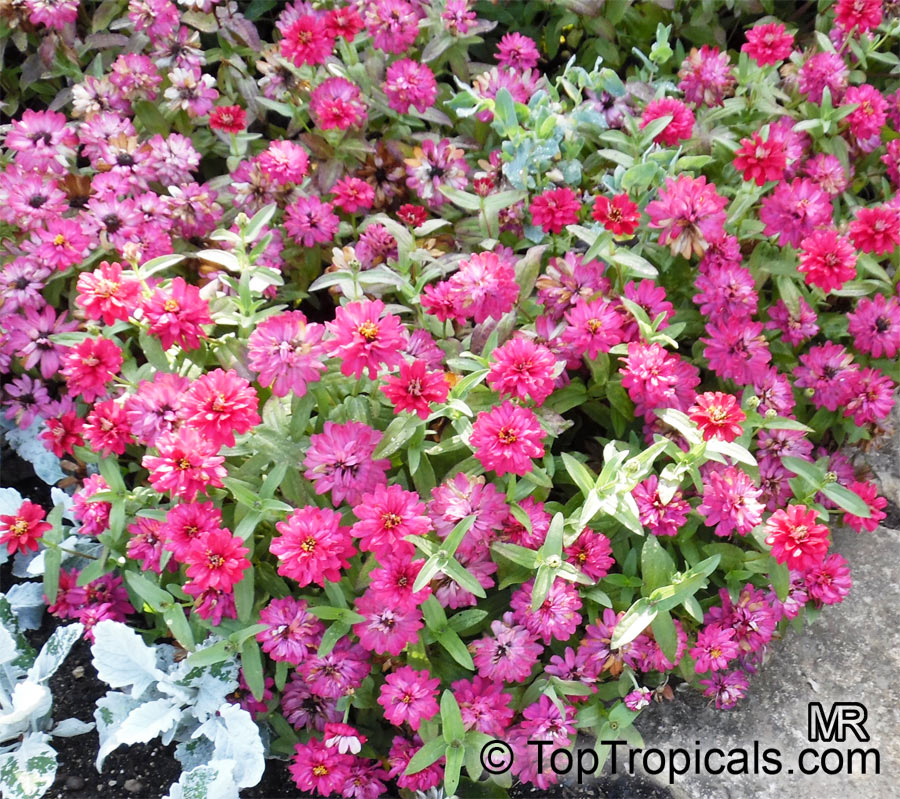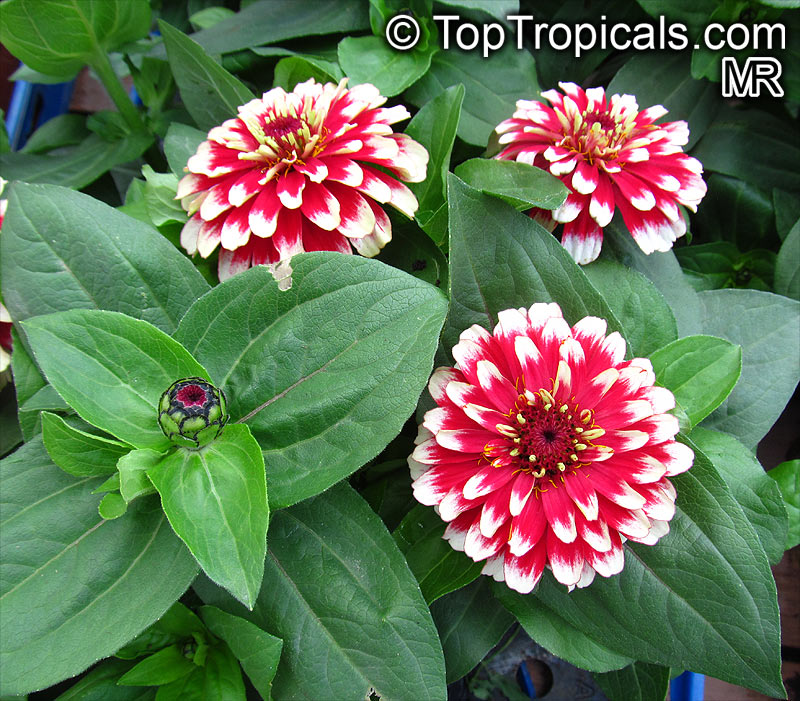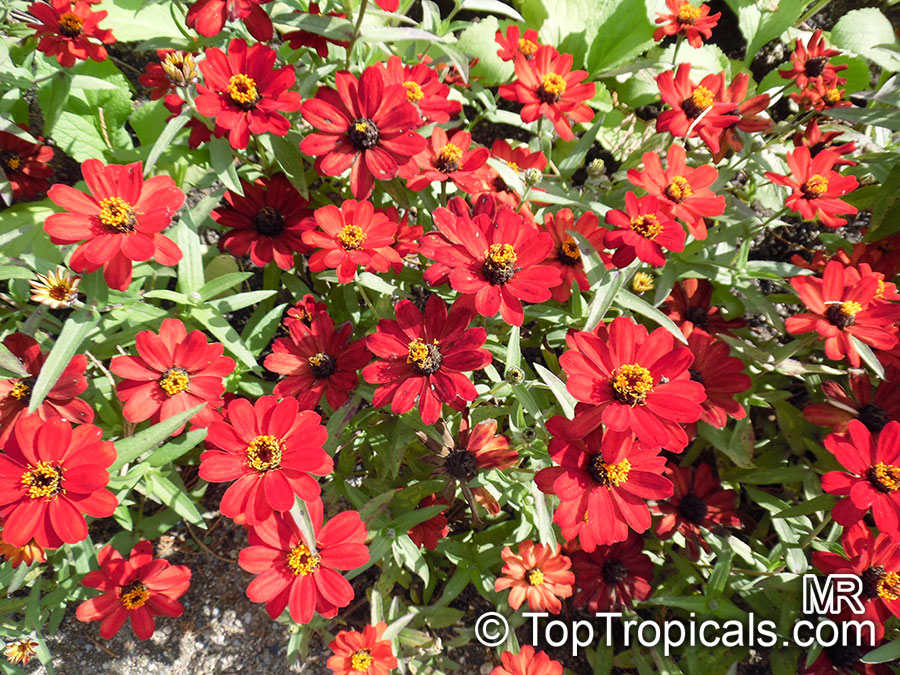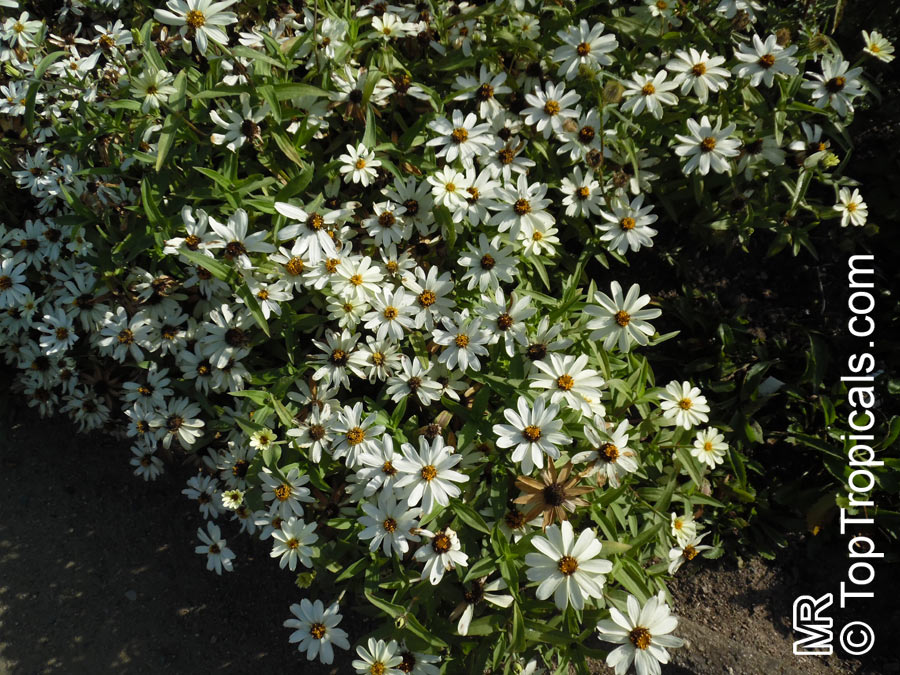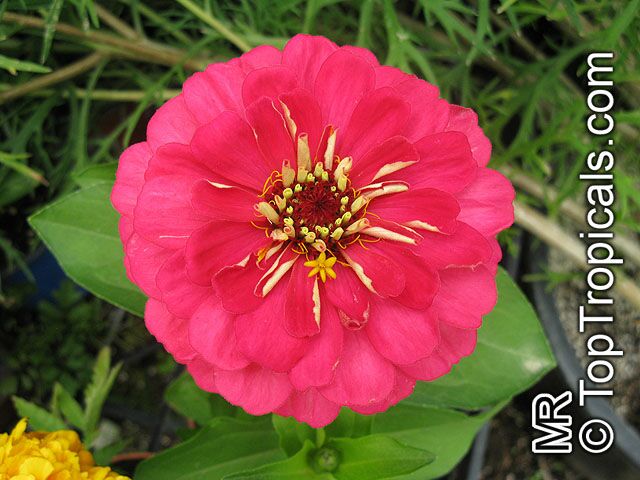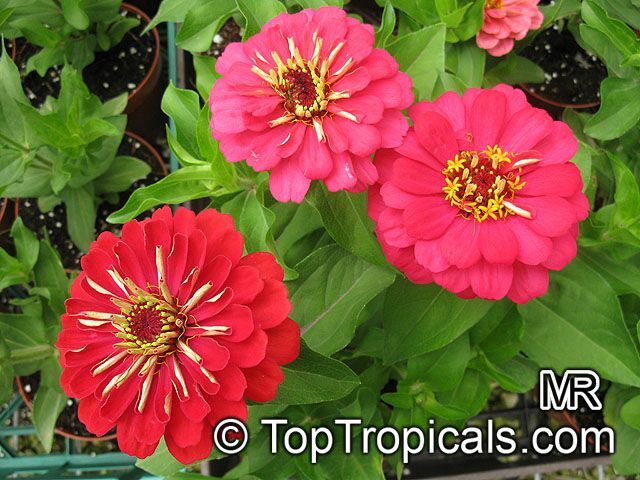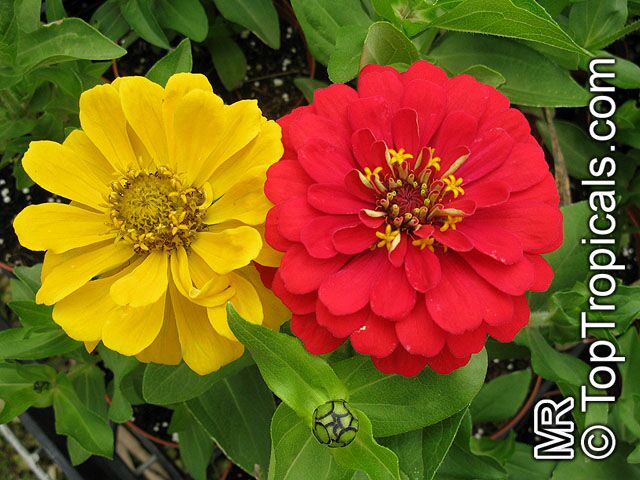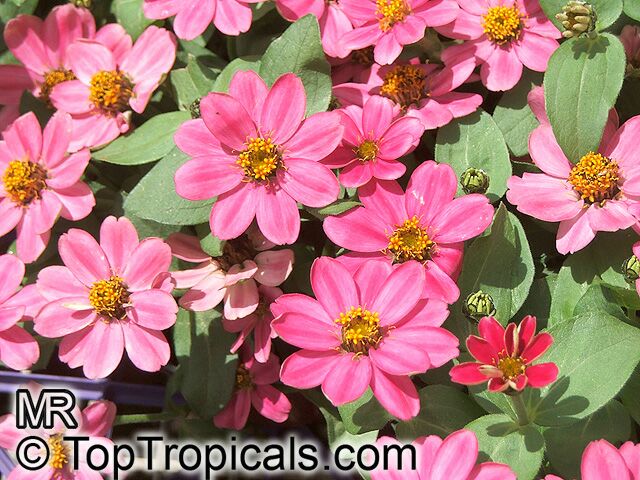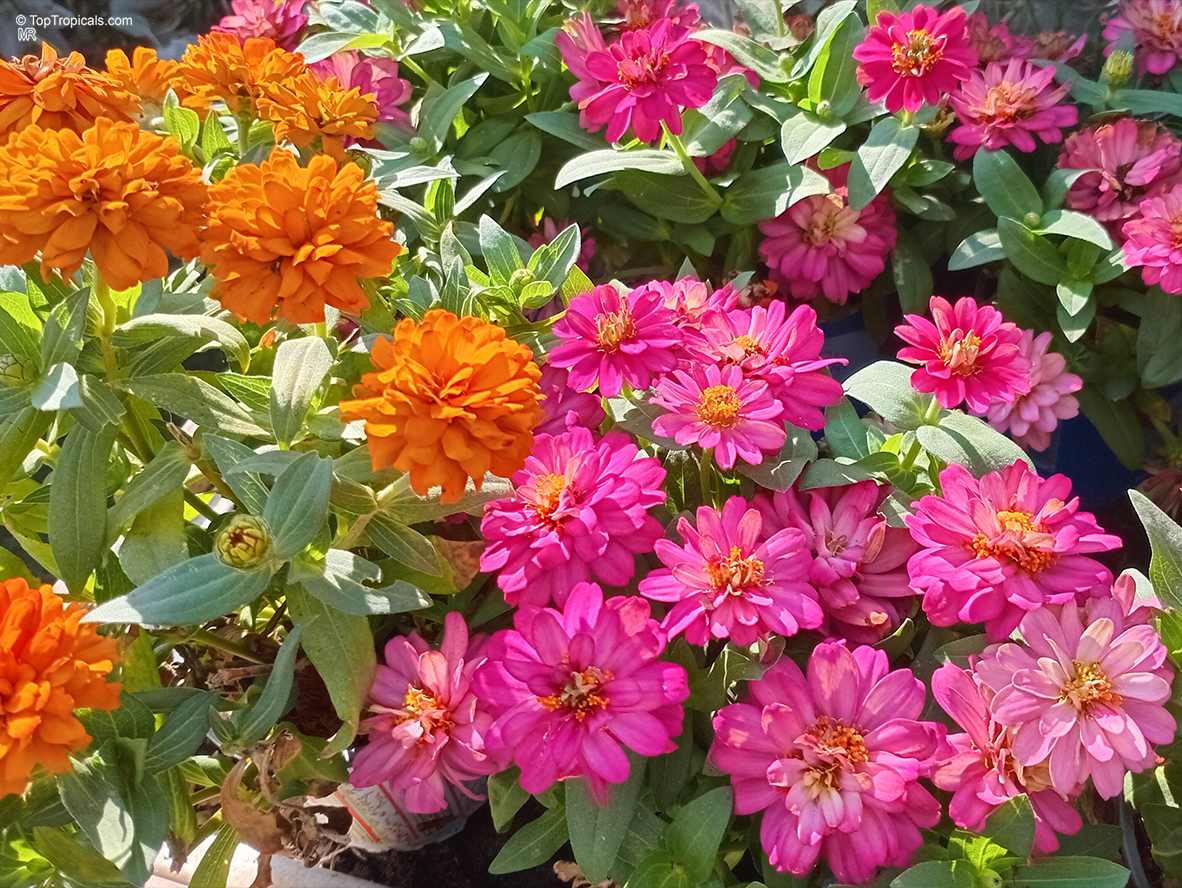Zinnia sp. (Zinnia)
Top Tropicals Plant Encyclopedia
Botanical name: Zinnia sp.
Common name: Zinnia
Family: Asteraceae
Origin: Mexico










The zinnia is a bushy annual flower native to Mexico. It grows in any type of soil, though it prefers well-drained, sandy loam, and it is fairly drought tolerant once established.
Zinnias come in many colors and sizes, making this a great choice for adding a splash of color in your garden. Low-growing varieties only a foot tall and wide can be used as a groundcover. Higher growing varieties can reach up to five feet and make a great backdrop for other flowering plants. The flowers, however, remain small, ranging from one and a half to three inches across.
Most zinnias love full sun, although some of the larger varieties such as Zinnia angustifolia will tolerate some shade. They should be watered regularly, with an inch of water every week in hot weather, and every two to three weeks in cooler conditions. Deadheading (removing spent flowers) will encourage more blooms, but is optional.
Zinnias come in a variety of colors, including pink, white, off-white, blue, lavender, purple, red, crimson, and yellow or orange. The colors may be solid or variegated. Zinnias are attractive to butterflies, hummingbirds, and other beneficial pollinators, so this is a great way to attract them to your garden.
To grow Zinnia sp. in cold regions, select varieties that can tolerate colder temperatures. Choose a variety that is hardy to USDA Zone 9-11. Plant in a pot that can be moved indoors in winter and set outdoors in spring. Use a well-draining potting mix and water regularly, allowing the soil to dry out before watering again. Make sure the pot has ample drainage holes to prevent the roots from becoming waterlogged. Place the pot in a sunny spot and provide plenty of airflow to prevent fungal diseases. Deadheads the flowers regularly to encourage new blooms.
